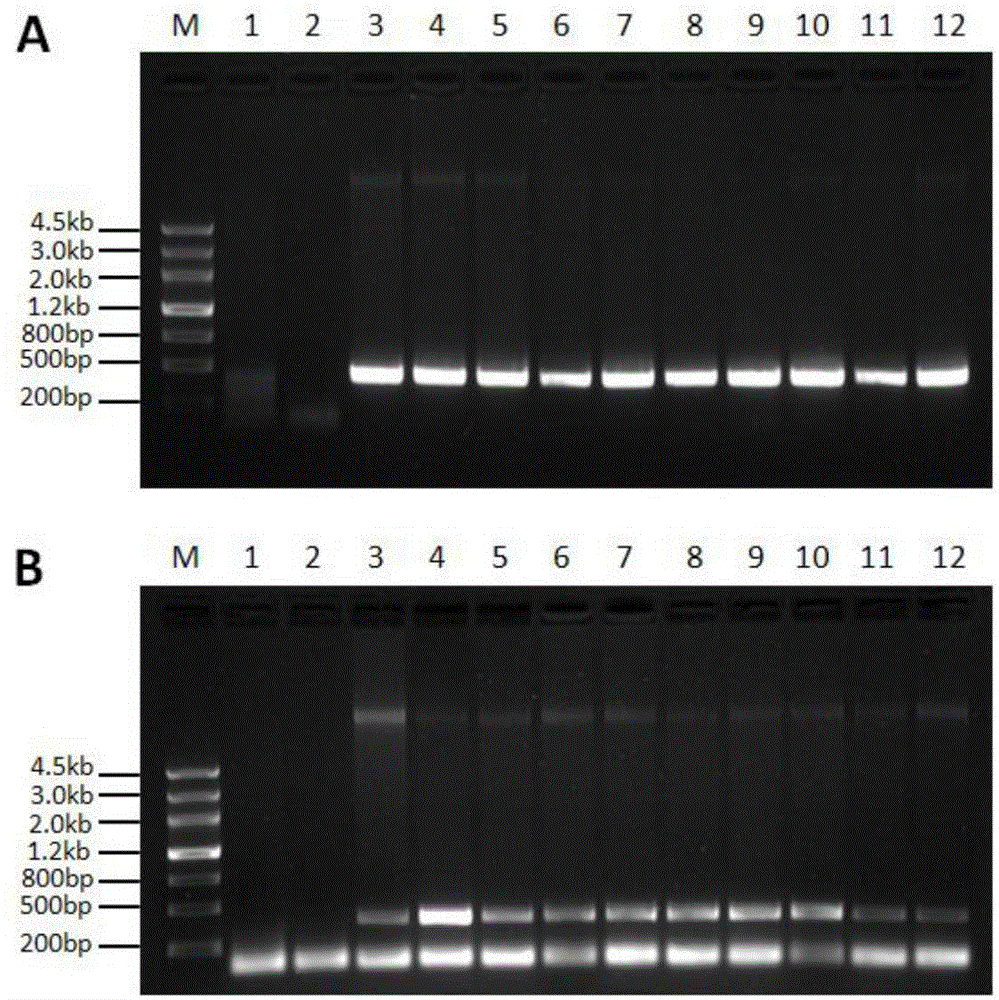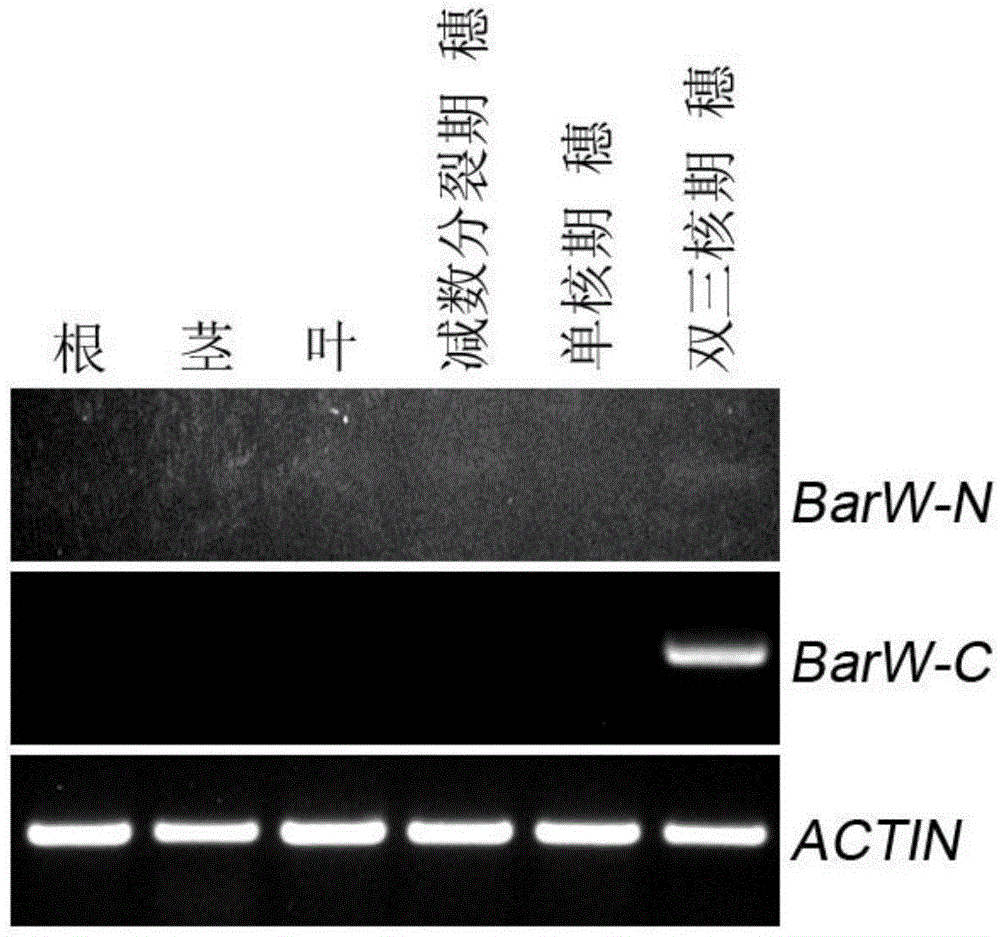Construct for regulating fertility of plant pollens and usage thereof
A technology for pollen development and introduction into plants, applied in botany equipment and methods, angiosperms/flowering plants, biochemical equipment and methods, etc., can solve problems such as easy leakage, easy to affect plant growth and development, Barnase genotoxicity, etc., to achieve The effect of low temperature sensitivity and avoiding abnormal development of tissues and organs
- Summary
- Abstract
- Description
- Claims
- Application Information
AI Technical Summary
Problems solved by technology
Method used
Image
Examples
Embodiment 1
[0034] Embodiment 1. synthetic BarnaseW nucleotide fragment
[0035] According to the high-level structure of Barnase, the codon preference of Bacillus amyloliquefaciens, and the codon preference of monocotyledonous plants, the nucleotide sequence of Barnase was modified, and the important amino acids that determine the temperature sensitivity of Barnase were also point-mutated ( Q15I, T16R, K19R, G65S, K66A and K108R). The modified and point-mutated nucleotide sequence, such as SEQ ID NO: 1, was named BarnaseW, and the sequence was synthesized by Shanghai Yingjun Biotechnology Co., Ltd.
Embodiment 2
[0036] Embodiment 2. Construction of plant expression vector pTa95v2
[0037] Specific primers designed to amplify PTaPSG719:
[0038] Primer 1: 5'-aagcttCGCATTCGCAAGGTTCACT-3'
[0039] Primer 2: 5'-ctgcagGCATTTCTATATGATATGACCGGCCAA-3'
[0040] Using the genomic DNA of wheat as a template, PTaPSG719 was amplified with the above primers. The PCR product was detected and recovered by 1% agarose gel electrophoresis, and the product was connected into pEASY-T3. Positive clones were screened and verified by sequencing. is the expected PTaPSG719 promoter sequence, as shown in SEQ ID NO:3 in the sequence listing.
[0041] Specific primers designed to amplify BarW-N:
[0042] Primer 3: 5'-ctgcag ATGGCGCAAGTTATTAATACGTTC-3'
[0043] Primer 4: 5'-gtcgac TCACCAGCCTAGAGCCTGC-3'
[0044] Using the artificially synthesized BarnaseW gene as a template, the above primers were used to amplify BarW-N. The PCR product was detected and recovered by 2.5% agarose gel electrophoresis. The produ...
Embodiment 3
[0063] Example 3. Agrobacterium-mediated genetic transformation of rice and wheat
[0064] The plant expression vector pTa95v2 was transformed into Agrobacterium AGLO strain by heat shock method.
[0065] Infect rice embryogenic calli with Agrobacterium, co-cultivate in the dark for 2-3 days, and then go through two steps of resistance selection, pre-differentiation, differentiation and rooting culture, and finally obtain the transgenic rice with kanamycin resistance ( Transplant pTa95v2 rice) T 0 Substitute plants.
[0066] Callus was induced secretly with mature wheat embryos. Wheat calli were infected with Agrobacterium and co-cultured in the dark for 3 days. Put the calli co-cultivated with Agrobacterium on the induction medium added with cefotaxime to resume culture in the dark for 1 week, then transfer to the selection medium for 4-6 weeks, and transfer the resistant callus to differentiation The medium induces the differentiation of shoots, and then the differentiat...
PUM
 Login to View More
Login to View More Abstract
Description
Claims
Application Information
 Login to View More
Login to View More - R&D
- Intellectual Property
- Life Sciences
- Materials
- Tech Scout
- Unparalleled Data Quality
- Higher Quality Content
- 60% Fewer Hallucinations
Browse by: Latest US Patents, China's latest patents, Technical Efficacy Thesaurus, Application Domain, Technology Topic, Popular Technical Reports.
© 2025 PatSnap. All rights reserved.Legal|Privacy policy|Modern Slavery Act Transparency Statement|Sitemap|About US| Contact US: help@patsnap.com



